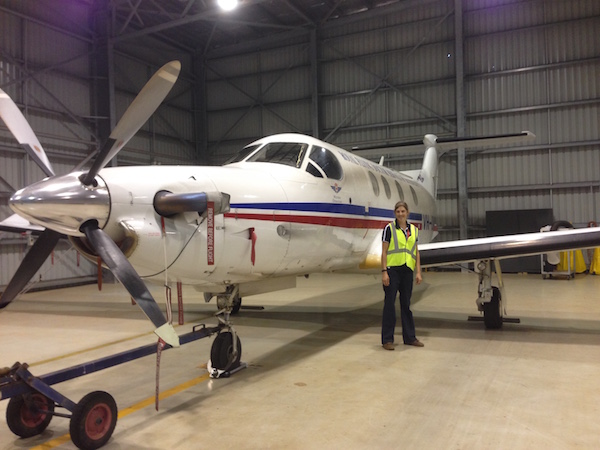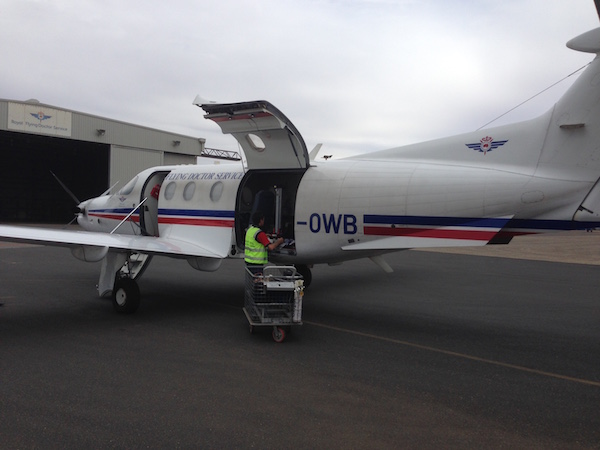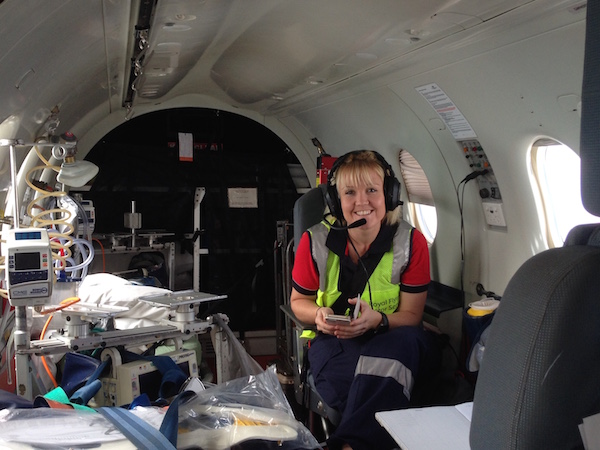From the other side of the stretcher
Host: Kalyeeda Station
Written by Barb Camp – Owner, Kalyeeda Station.
It is 6.04am and I am woken to the sound of my mobile buzzing into life next to my ear;
“Hello, Barbara. We’ve been tasked. Would you like to come flying?”
Well, ask a girl a silly question! Of course I do!
In every station and remote outpost throughout Australia there is a large green locked box with RFDS stamped on the top of it. It’s a box we all hope not to have to use, but when you are so far from the nearest hospital and live in a world full of dangerous machinery, unforgiving flora and fauna and – let’s be honest – sometimes rather silly accidents, it’s a box we are all familiar with. In here is stored a range of medical supplies ranging from triangular bandages to strictly controlled vials of morphine and everything in between. Printed on the lid of that big green box is the number for the Royal Flying Doctor Service. This box and that number is the first line of defence for health emergencies in the bush.
In my time in the Kimberley I’ve had a fair bit of contact with this iconic and essential service. Sometimes it can be something minor. I’ve woken in the night to find my hay fever has progressed to uncontrollably itchy hives. Time to call the RFDS. Not a condition meriting a visit certainly, but the doctors will diagnose you over the phone and walk you through the box (“go to shelf two, find the red bottle with a sticker saying 226 on it . . .”) and follow up on your care.
Of course, sometimes it’s a bit more serious. I have seen numerous posts and stories on this site sharing stories of serious accidents out in the bush. I could share a few myself.
Some of my scariest days have involved motorbike stacks, horse and rider falls, and car accidents. I will never forget standing next to my good friend on the back of the bullcatcher and watching him lose his balance and fall off to be run over by the trailer we were towing. A little bit of bush bandaging had his very broken leg splinted to some canoe paddles and transported to the airstrip on the back of an old door to meet the RFDS plane.
Now I am experiencing life from the other side of the stretcher. As part of my training as a student nurse I am taking a rotation with the RFDS in Port Hedland.
 One of 18 RFDS planes sitting waiting for action in its hangar in Port Hedland RFDS base.
One of 18 RFDS planes sitting waiting for action in its hangar in Port Hedland RFDS base.
WA is a big state, but the only tertiary hospitals we have capable of acute problems requiring specialised surgery or Critical Care units are in Perth. Even to get to a local hospital can take hours down a rough, bumpy dirt road. Sometimes help just can’t get there fast enough. That’s what the Royal Flying Doctors are all about. There are 14 PC-12 planes and one jet based around WA that are there to provide medical services to the most remote areas. This goes from flying out regularly to organised GP clinics in remote communities, to the 24/7 on-call doctor, nurse and pilot team who will perform remote retrievals for ill people across the bush and transfer the acute patients from the smaller regional hospitals down to Perth for specialised treatment.
Imagine this; you live in Kununurra – a reasonably big town in the North East of WA – and your little daughter has just choked on a carrot stick. She cannot breathe and is turning blue. You can perform basic first aid and manage to get her into Kununurra hospital where the doctors and nurses manage to intubate her and get oxygen into her little body. But the carrot is still lodged in her lung and she is relying on a ventilator to breathe. She needs surgery that can only be performed 3,000kms away in Perth . . .
In Derby – the closest RFDS base, a phone is ringing. While your little girl is being stabilised in Kununurra there is a pilot checking the plane and finalising the flight plan. The doctor and nurse on call are deciding what equipment will be needed to maintain your child’s life and loading it onto the plane. Inside of a space that is not even big enough to stand up in there is oxygen and ventilators, a full array of monitoring equipment, defibrillators, and drugs. That tiny metal cylinder is literally a pressure cooker of a critical care unit with everything necessary to maintain life long enough to keep your little girl’s body functioning long enough to get her to the help you need.
 Loading up Oscar Whiskey Bravo.
Loading up Oscar Whiskey Bravo.
Meanwhile, in Port Hedland another phone is ringing. This time it’s a retrieval. This means someone outside of a hospital has had an accident and needs rescued from site. It’s another Priority 1 call, so the team has an hour to assemble their equipment and get in the air. A grader driver on a station has got chest pain and he’s going grey and struggling to breathe. Even as the plane is being loaded the doctor is on the phone talking to the fellas looking after him and asking the important questions. Is he conscious? Is he taking any medication? What is his pulse? The doctor will be directing the station people on how to sit old Bob and what drugs to get out of the big green RFDS box. When the plane arrives, he’s immediately put onto oxygen and cannulas are pushed into his veins to deliver him the medications he needs to ease the strain on his damaged heart.
These are just two examples of what the RFDS might experience, because there is no such thing as a typical day in their job. Like station life, this is not a 9 – 5 job. I was warned on day one to take a bag of essentials with me because you never know where you might end up.
I wish I had taken that advice seriously as I am writing this at midnight from a faceless hotel in Perth where all I have is my empty lunchbox, the scrubs I’m standing up in and a hi-viz vest. Let me tell you it’s a damn sight colder in Perth than it was in Hedland this morning when we loaded the plane to pick up a man with suspected appendicitis at a remote Indigenous community to transport him to Karratha hospital. From there we have been tasked, re-directed mid-flight and sent here, there and everywhere. Since this morning I’ve been off the plane at two mine sites and Onslow airstrip. We were supposed to have a ‘meet’ at RFDS Meekathara but a Priority 1 diversion for a broken pelvis caused us to miss them.
A hasty conversation with the co-ordination centre in the main Perth base saw us flying on the long haul to the bright city lights of Perth City.
We were at work today for 14 hours and nearly eight of them were been spent in the air. Strict guidelines protect the RFDS crew from fatigue and, except in exceptional circumstances the pilots can only fly for eight hours. That means we’re grounded in Perth for the night for a break before flying home tomorrow.
I’m exhausted but exhilarated after such intense monitoring and patient care in the cramped, noisy little plane. The RFDS staff are without a doubt a special breed of people. They deal with incredibly intense and acute issues in the smallest of areas without ever losing their heads. They never know if the day will end with them getting home to their families or finding themselves thrown into an emergency situation with no warning. Like most bush workers they will be smiling and thriving on the adventure.
 Flight Nurse Sophie nestled in with stretchers and monitoring equipment.
Flight Nurse Sophie nestled in with stretchers and monitoring equipment.
All of the staff that work for the RFDS are incredibly experienced. The nurses and doctors all have a strong background in critical care or emergency medicine and all of the nursing staff are also trained midwives. They are used to adapting to unusual and challenging circumstances and never lose their heads in a crisis. Like all bush workers, they’ve got a good sense of humour and a high regard for teamwork. When I ask the staff what attracts them to the job they tell me how they love the challenges that remote work involves. They thrive on the fact that no day is the same as the last and you can travel all over this big and rambling state while using your skills. It is fulfilling and challenging work and definitely not your typical 9-5.
Oh, and who could ever get sick of a job where as you work to help people in the most dire of circumstances you also get this view from your office window? It’s all about the flying 😉

